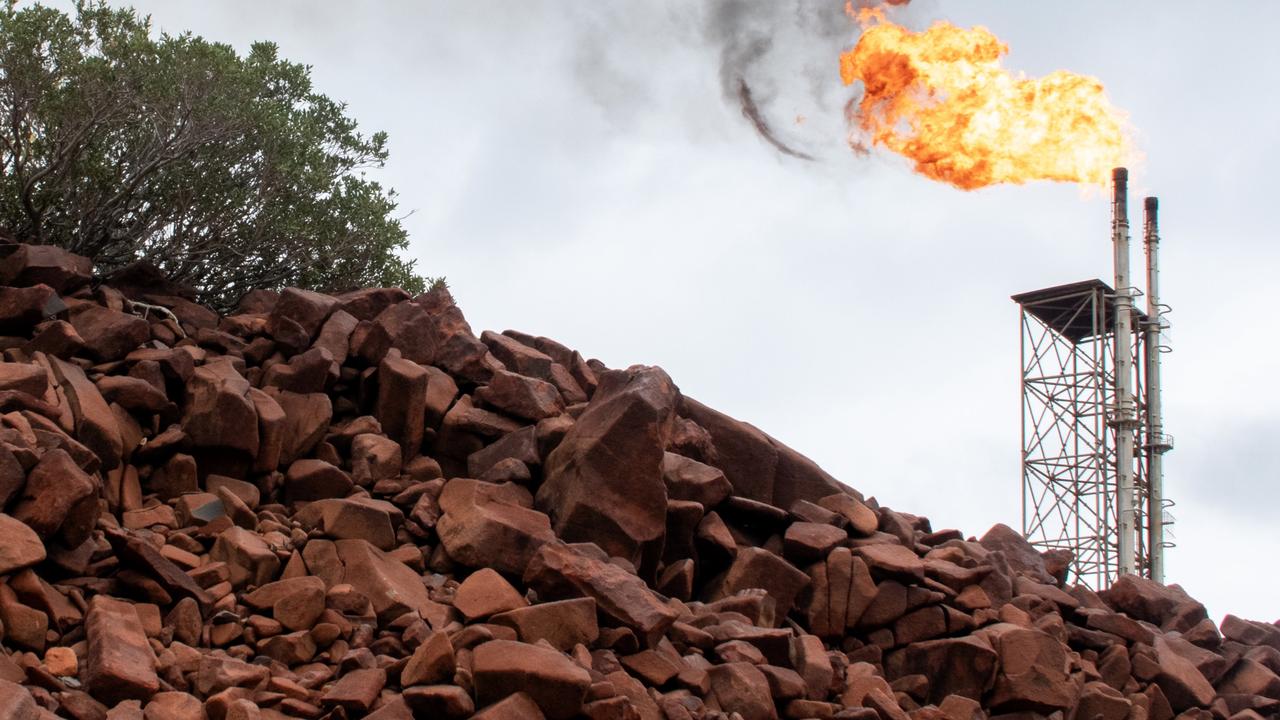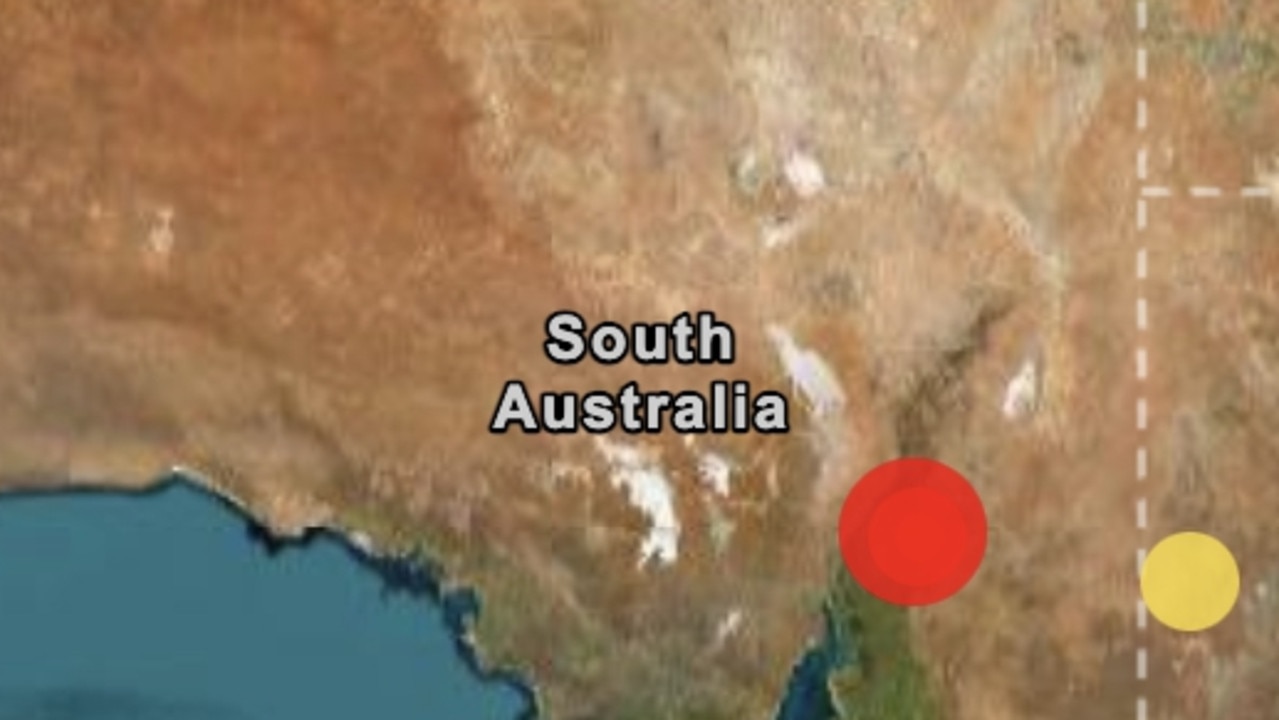Why the hailstones in the Sydney storm were so weird looking
Hail is hardly rare but it’s usually pretty standard in size and shape. However, yesterday’s Sydney storm delivered up stones that looked truly bizarre.
It’s not like we’ve never seen hail before right? But the system that dumped a bucketload of the stuff on Sydney and other parts of the New South Wales coast yesterday had people scratching their heads because of the sheer oddness of the ice that fell from the sky.
“This Sydney hail is some of the weirdest looking hail I’ve seen,” said one person on social media.
Another said a stone that fell on their house looked like an egg, what with its bulbous opaque centre surrounded by a translucent ring.
Some stones were textured, like they’d boiled and bubbled in the sky and then frozen solid as they fell. Other stones looked like inflatable rings or even flowers with delicate patterns.
So what was up with yesterday’s hail and was it really different to usual?
Well, the answer is yes. Kind of.
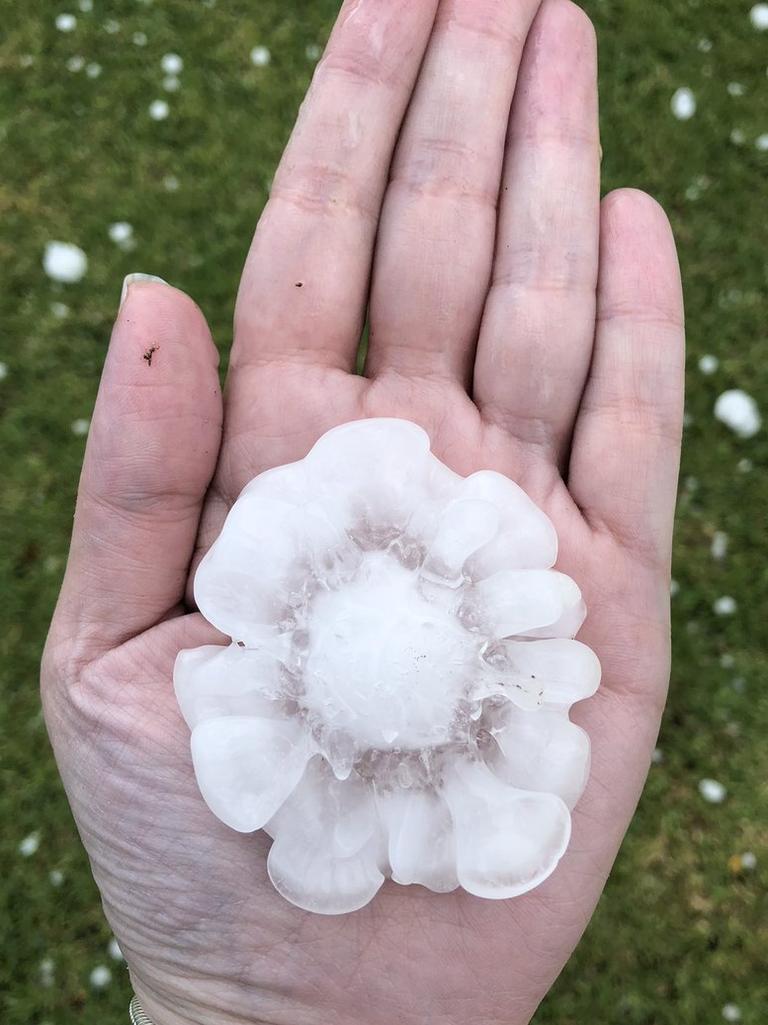
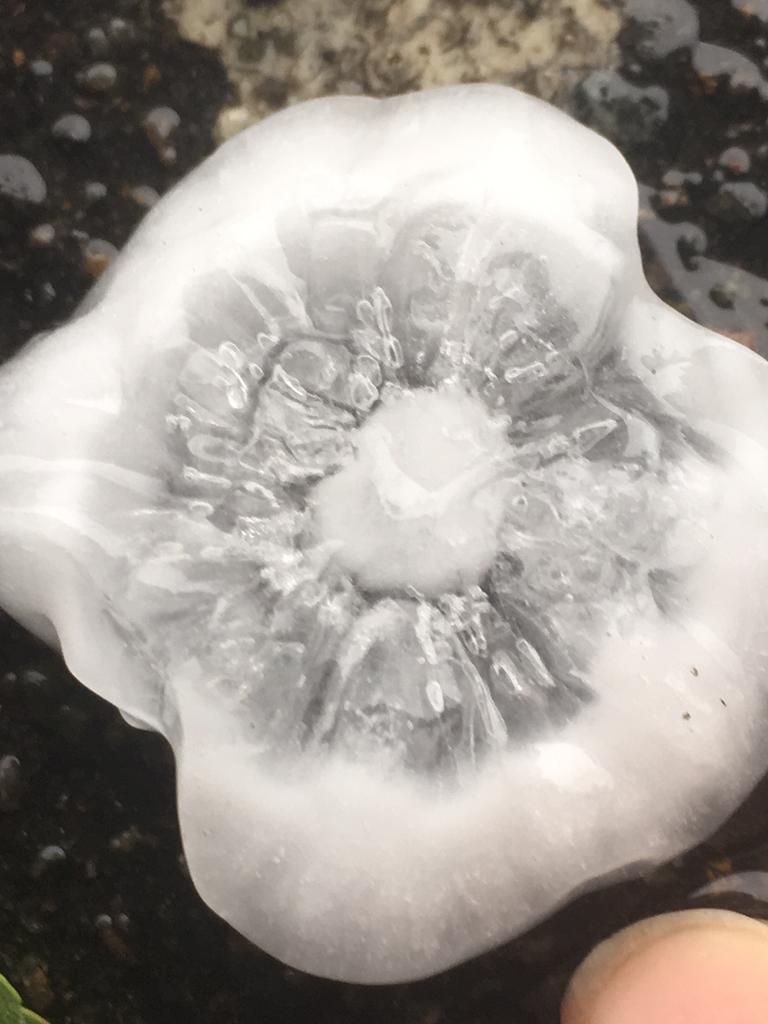
Your garden-variety hail is often very uniform — round and opaque and relatively small. But what fell on Thursday was much larger and that’s because the storm itself was far larger.
“There’s nothing particularly unusual about the shape and the colour of the hail but what was notable was the storm,” Sky News Weather channel meteorologist Tom Saunders told news.com.au.
Hail is water in the troposphere, the lowest level of the atmosphere, which freezes within thunderstorm clouds.
“In typical storms, when hail the size of a pea has been generated in storms it falls to the ground,” Mr Saunders said.
The weirdest hail i have ever seen!!! pic.twitter.com/HxQRfvlenv
— Carly Heading (@carlyylalaa) December 20, 2018
This Sydney hail is some of the weirdest-looking hail I've seen. Terrifying, obviously, but so fascinating! Some look almost like flowers or little tiny planets. And literally 5 minutes after the giant hail, the weather returned to humid & sweltering. Ahh, Sydney... #SydneyStorm pic.twitter.com/YzzyD7HkjQ
— Laura Phenomenon (@LauraPhenomenon) December 20, 2018
Hail as big as a poached egg! #sydneyweather pic.twitter.com/I6XPFskcT3
— Grant Vandenberg (@Grant_Vando) December 20, 2018
Can you call this hail anymore? Or is this an asteroid? @newscomauHQ pic.twitter.com/lB1onlimAH
— Danny Clayton (@DannyjClayton) December 20, 2018
Actual hail in Sydney around 20 minutes from my place. This is insane!! pic.twitter.com/7IfsxSdn6n
— Champ (@ChampChong) December 20, 2018
But for large hail to form, the stone has to be caught in an updraft taking it back into the cloud.
“After the initial hail develops in the storm and starts to fall it then gets covered in water and can get sucked up again and gets colder and starts to freeze,” Mr Saunders said.
“Sometimes there can be a very strong updraft and air can rise so rapidly through the troposphere it can support the weight of the hail and so stops it falling to the ground.
“Like with the Sydney storm yesterday, the stone will go up and down in the cycle several times, sometimes three or four times, each time creating a new layer. As that happens the strange shapes form.”
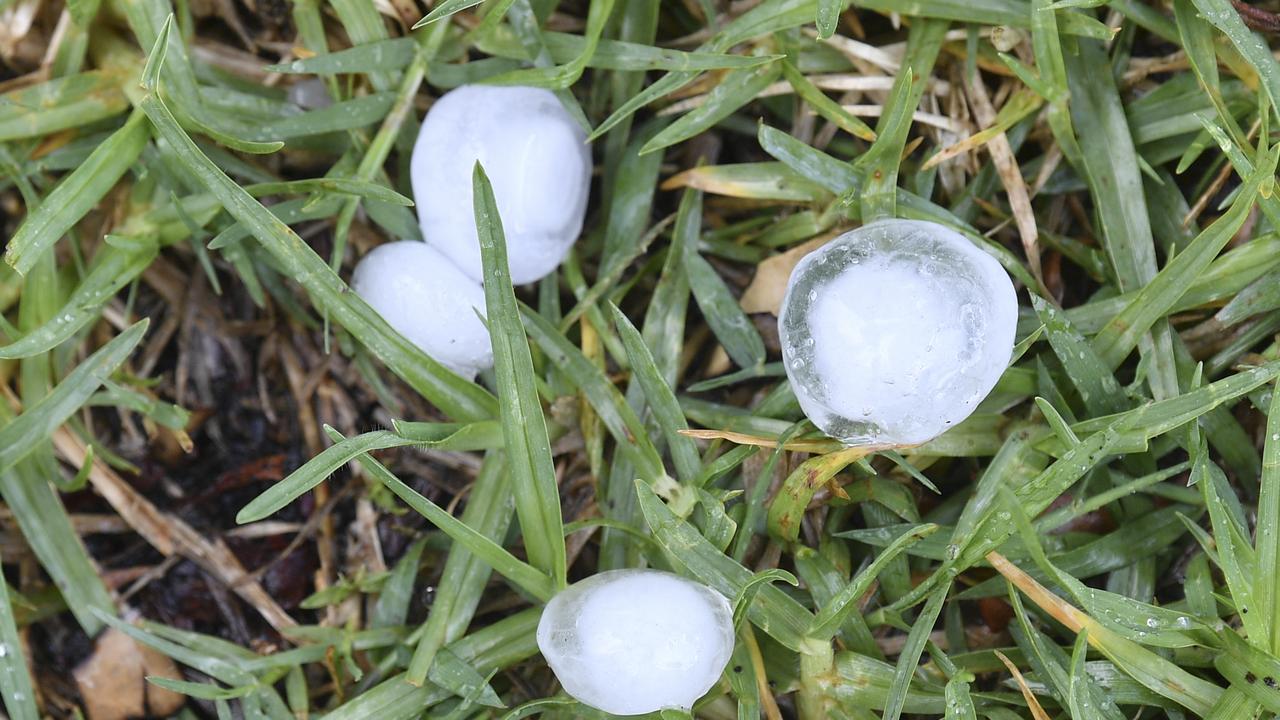
Finally, when the stone is so heavy the updraft can no longer support it, the peculiar-shaped stone will plummet to the ground.
In addition, the storm can be so ferocious that the individual hailstones smash into one another either leading them to shatter or to physically join together, further distancing them from the usual round shape.
The larger the hail, the more layers of water it has collected, during its journey and so the weirder the shape.
This layering is sometimes clearly visible on the stone, Mr Saunders said.
“The initial hailstone is more white and opaque in colour but when the (new) water freezes it will be clear ice which is why you see a core and then almost like icicles coming out of it.
“So with hail that looks like an egg, what resembles the yolk, the white looking ice is the initial hail. The clear part develops as the hail goes up and down in the troposphere,” he said.

But why was there a storm so large that it had enough power to create hail that large?
“The reason was because of the unbearable heat and humidity yesterday,” Mr Saunders said.
“Warm and humid air rises very quickly and there is your updraft.”
They may have been pretty, but the hail came with a super-sized sting in its tail. The one-in-20-year storm damaged scores of cars and homes.
The Insurance Council of Australia has declared the incident a “catastrophe” with the clean-up bill expected to be at least $20 million.


